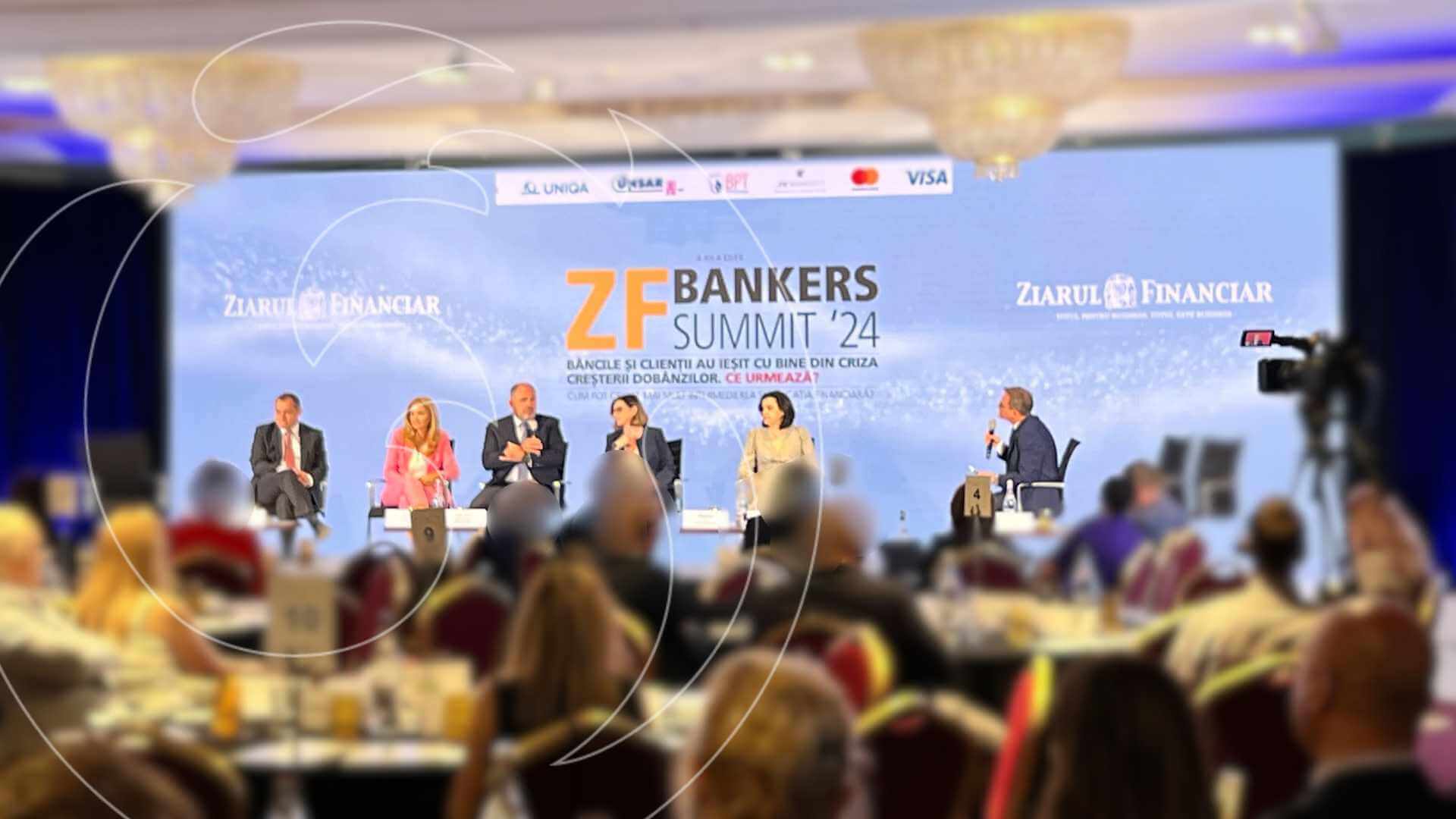Insights from ZF Bankers Summit 2024
A Pathway to the Future of Banking
A Pathway to the Future of Banking

The ZF Bankers Summit 2024 brought together key players in the financial sector to discuss the current state and future direction of banking in Romania. The event highlighted several trends and challenges facing the industry, particularly in the realms of digital transformation, financial education, and the evolving competitive landscape. Here are three key takeaways from the summit:
The shift from traditional banking models to digital platforms is no longer a mere trend but a strategic imperative for survival and growth. Several speakers at the summit emphasized the critical importance of embracing digitalization to meet customer expectations and enhance operational efficiency.
Several banks have made significant strides in digital transformation, investing heavily in technology to stay competitive and meet customer demands.
CEC Bank: As the third-largest bank by assets in Romania, CEC Bank has announced plans to invest in digitalization and automation in the coming years. This strategic focus aims to enhance their competitive edge and streamline operations.
ING Bank: ING ha s been a pioneer in digital banking, offering a fully digital experience to its customers. The bank has continually invested in its digital platforms to provide seamless and efficient services, focusing on user-friendly interfaces and advanced mobile banking solutions.
Raiffeisen Bank : Raiffeisen has also been proactive in digital transformation. The bank has introduced several digital products and services, including a comprehensive mobile banking app that allows customers to manage their finances on the go. Their investment in technology aims to provide a more personalized banking experience.
BCR 's significant investment in technology underscores the industry's commitment to digital transformation. Since 2018, BCR has invested between 140-150 million RON annually in technology and digitalization. This investment has facilitated the transition of 90% of their banking products to digital platforms, making them more accessible to consumers.
The consumer behavior in Romania reflects a strong drive towards digital banking. According to the data presented at the summit:
- 8 out of 10 Romanians make purchases using their mobile phones.
- 7 out of 10 Romanians prefer digital payment methods, including smartwatches.
- 2 out of 3 Romanians opt for card payments in-store, while 3 out of 4 prefer online payments.
These trends highlight the necessity for banks to continue enhancing their digital offerings to cater to the tech-savvy Romanian population. Neobanks and fintech companies, with their fully digital platforms, present a growing competitive threat to traditional banks. Their ease of entry into the market due to reduced barriers underscores the need for traditional banks to innovate continuously.
Financial education is pivotal in supporting the digital shift. BCR has impacted 1.2 million people through its financial education programs. This initiative not only empowers consumers but also builds a more informed customer base that can effectively utilize digital banking services.
As banks increasingly adopt digital technologies, the importance of cybersecurity cannot be overstated. The summit highlighted cybersecurity as a critical focus area, with a growing recognition of its importance across the industry.
The rise in digital transactions and the integration of advanced technologies have amplified the risk of cyber threats. Banks are now facing the dual challenge of securing their digital infrastructure while ensuring customer data privacy. This dual focus is becoming a significant part of their operational strategy.
The transition to digital platforms also brings about technological risks. Banks must navigate these risks by incorporating robust cybersecurity measures and staying ahead of potential threats. The dynamic nature of technology adoption, with the continuous introduction of new products and services, requires a proactive approach to risk management.
The competitive landscape in the banking sector is evolving rapidly, driven by both technological advancements and regulatory changes.
The emergence of neobanks is a notable trend, with these digital-only banks gaining traction among consumers. Their user-friendly interfaces, seamless transaction processes, and innovative financial products make them attractive alternatives to traditional banks.
Regulatory advancements have also played a significant role in shaping the banking landscape. Over the past five years, there have been substantial legislative developments in digital finance, including directives on "buy now, pay later" schemes. These regulations aim to create a balanced environment that encourages innovation while protecting consumers.
Traditional banks respond to these competitive pressures by investing in digitalization and exploring partnerships with fintech companies. For instance, CEC Bank , the third-largest bank by assets in Romania, has announced plans to invest in digitalization and automation in the coming years. This strategic move is aimed to enhance their competitive edge and meeting the evolving needs of their customers.
ZF Bankers Summit 2024 provided valuable insights into the current trends and future directions of the banking industry in Romania. The three key takeaways from the summit—digital transformation, cybersecurity, and the evolving competitive landscape—underscore the need for banks to innovate continuously and stay ahead of technological and regulatory changes.
- BCR 's Annual Investment: 140-150 million lei in technology and digitalization since 2018.
- CEC Bank : Plans significant investments in digitalization and automation.
- ING Bank: Pionee ring fully digital experiences and user-friendly mobile banking solutions.
- Raiffeisen Bank : Introducing comprehensive digital products and personalized banking services.
- Digital Product Adoption: 90% of BCR's banking products for individuals are accessed digitally.
- Consumer Preferences: 8 out of 10 Romanians make purchases on mobile phones; 7 out of 10 prefer digital payment methods; 2 out of 3 prefer card payments in-store; 3 out of 4 prefer online payments.
- Financial Education Impact: BCR's programs have impacted 1.2 million people.
As the industry continues to evolve, the insights from the ZF Bankers Summit 2024 highlight the importance of staying agile, investing in technology, and prioritizing cybersecurity to thrive in the increasingly digital banking landscape.